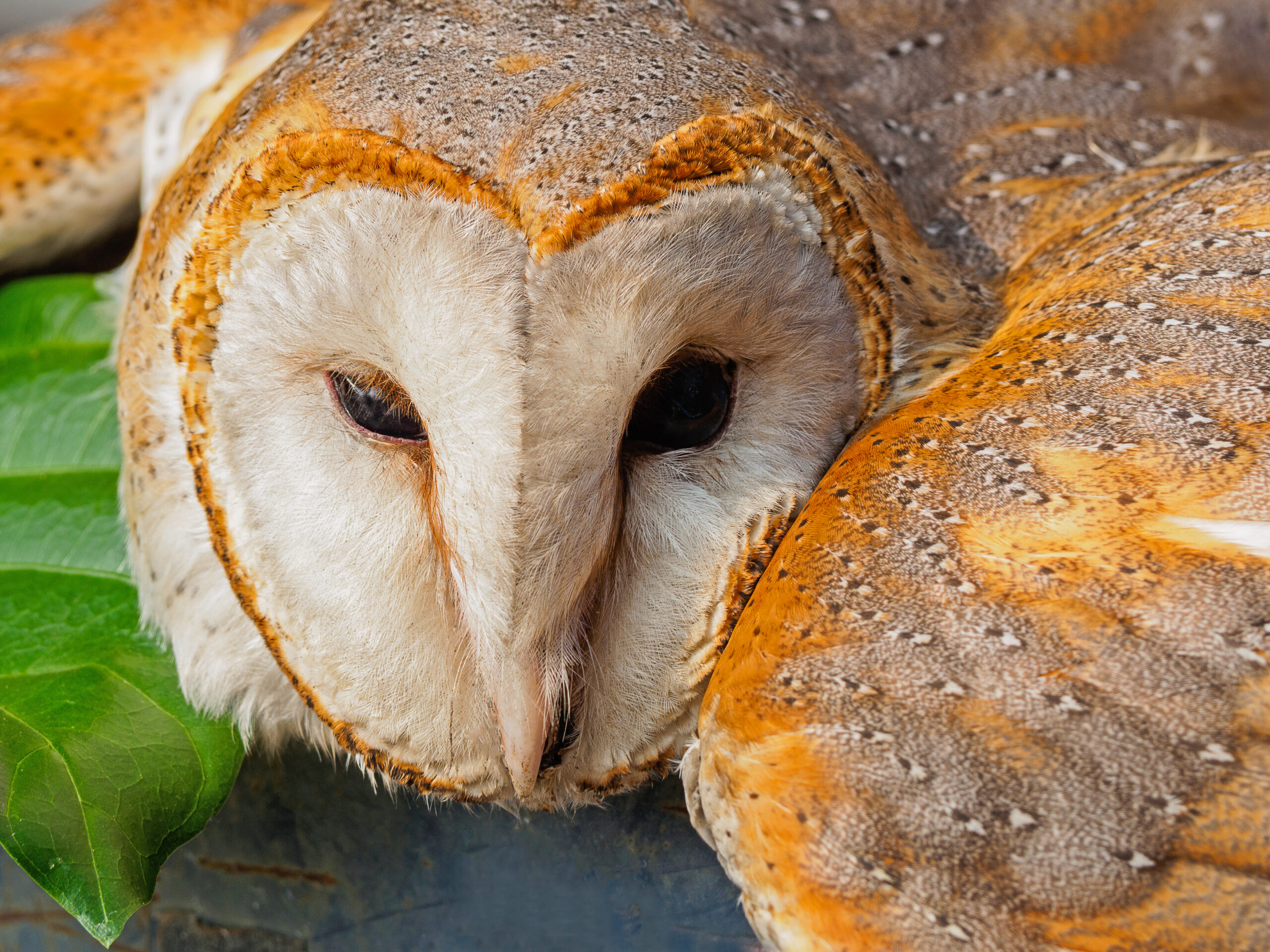North America hosts a fascinating variety of owls, each with unique features and behaviors. These nocturnal birds of prey captivate with their mysterious presence and vital ecological roles.
Let’s explore distinct types of owls found across this diverse continent, each offering a unique glimpse into the world of these incredible raptors.
1. Great Horned Owl
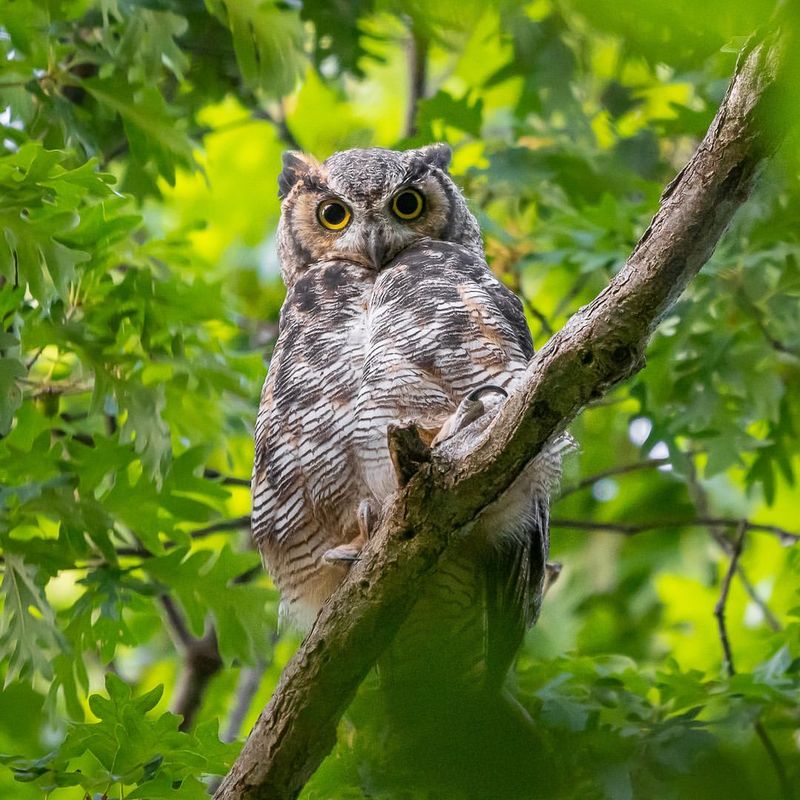
The Great Horned Owl is a powerful hunter found throughout North America. Known for its prominent ear tufts, this owl is highly adaptable and can thrive in a variety of habitats, from dense forests to urban areas.
Its deep hooting call is one of the most recognizable sounds in the owl kingdom. These owls are formidable predators, capable of taking down prey larger than themselves, including skunks and hares.
With a wingspan that can reach up to five feet, they are impressive in flight, often seen gliding silently as they hunt under cover of night. Their adaptability and keen hunting skills make them a dominant presence in their ecosystem.
2. Barn Owl
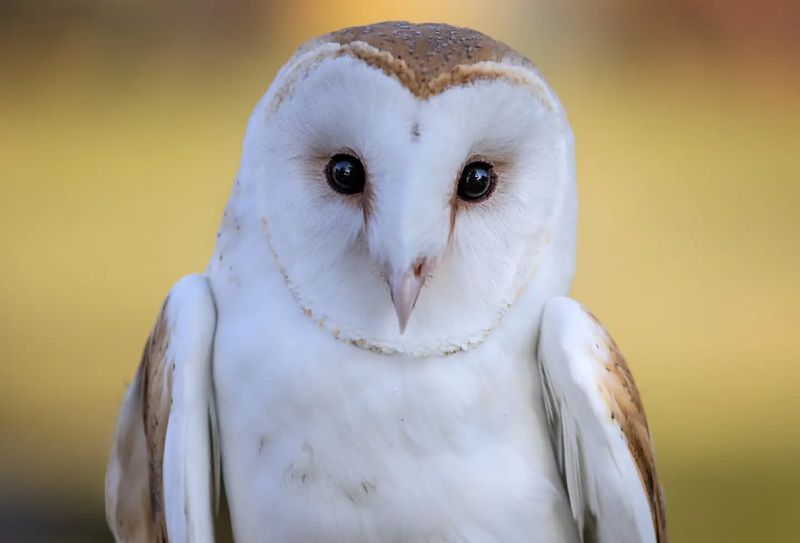
Renowned for its distinctive heart-shaped face, the Barn Owl is a widespread resident across North America. This species prefers open habitats like fields and meadows where it can hunt for rodents.
With the most sensitive hearing among owls, Barn Owls can locate prey even in complete darkness. Their flight is nearly silent, allowing them to swoop down on unsuspecting prey with ease.
Although they are often associated with rural landscapes, these adaptable owls can also be found in suburban settings, prospering where ample food supplies exist. Their eerie screech is a common sound in the countryside at night.
3. Snowy Owl
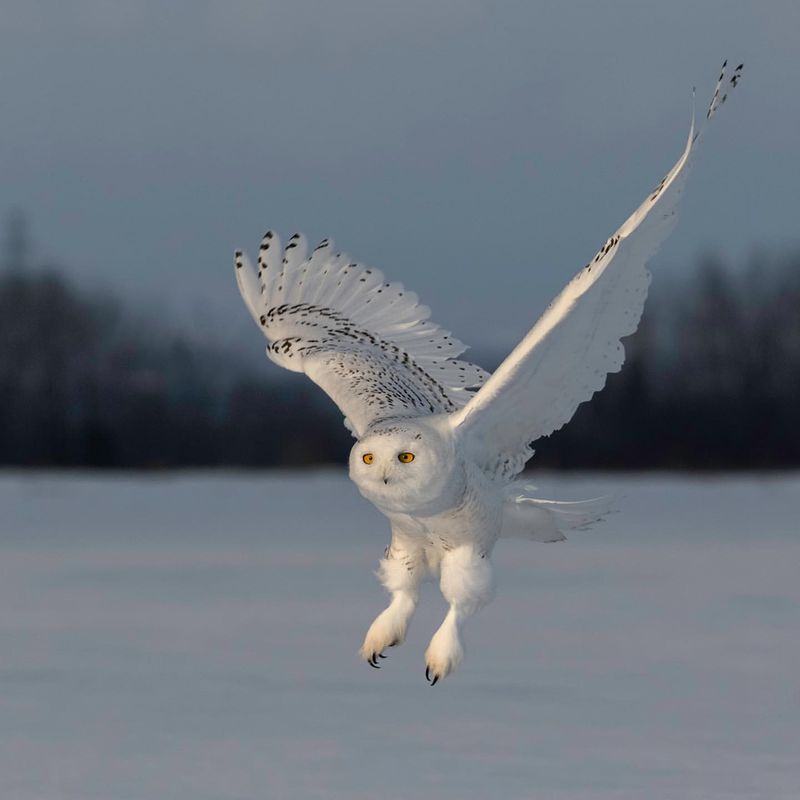
Owls in general are beautiful animals, as evidenced by some amazing wildlife owl photos out there. But Snow Owls are considered to be some of the most beautiful out there. These large, white owls migrate into North America during the winter, often seen in open areas like fields and airports.
Adapted to cold climates, Snowy Owls have dense plumage and heavily feathered feet to keep them warm. They primarily hunt lemmings but will also take other small mammals and birds.
Their beautiful plumage provides excellent camouflage against snow, making them masters of stealth. They’re known to be diurnal, actively hunting during the day, especially in the longer daylight hours of the far north.
4. Eastern Screech Owl
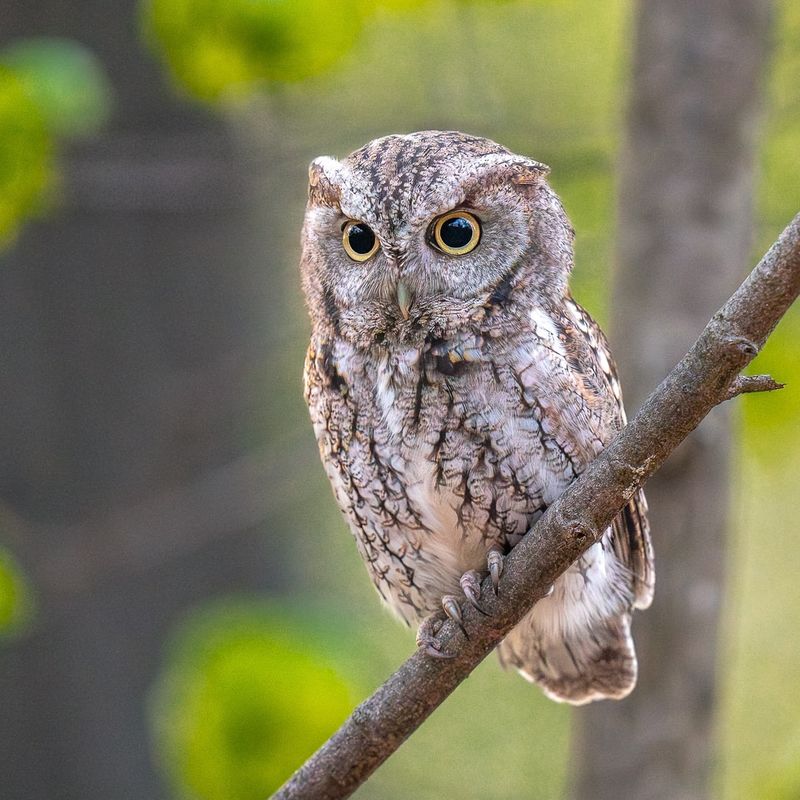
This species is a small but fierce predator found in wooded areas across eastern North America. Despite its size, it has a varied diet that includes insects, small mammals, and birds.
These owls are masters of camouflage, often roosting in tree cavities where they blend in with the bark. Their call, a trilling sound, is a common night-time serenade in their habitats.
Eastern Screech Owls exhibit two color morphs, either gray or reddish-brown, helping them blend into different environments. They are known for their curious and bold nature, occasionally nesting in human-made structures like nest boxes.
5. Burrowing Owl
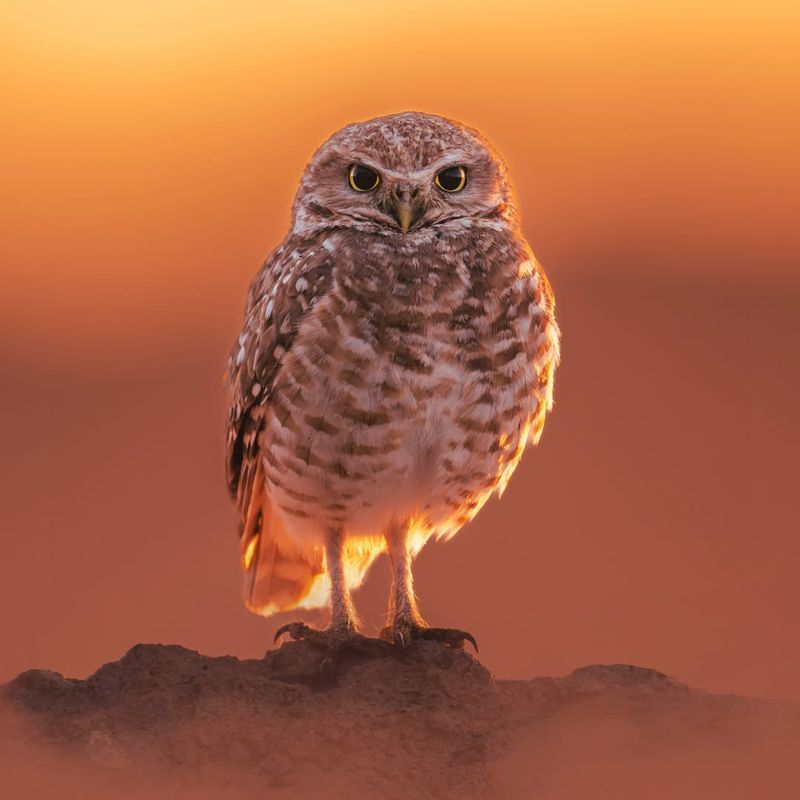
Unique among owls, the Burrowing Owl resides in open prairies and deserts of North America. Unlike most owls, it is often active during the day.
These owls make their homes in abandoned burrows of mammals, such as prairie dogs, hence their name. Their diet primarily consists of insects and small rodents.
Burrowing Owls are known for their distinctive long legs and strikingly bright yellow eyes. Their comical bobbing movements and charismatic behavior make them a favorite among bird watchers. Conservation efforts are crucial for their survival as many of their habitats are threatened.
6. Northern Saw-Whet Owl
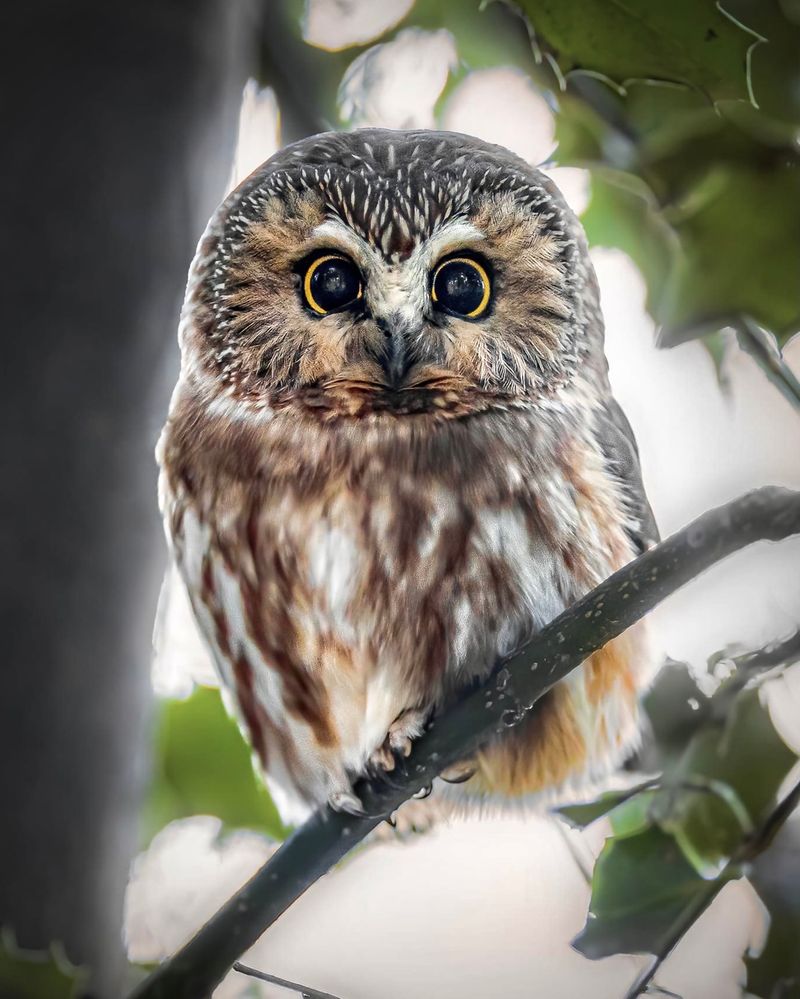
Small and elusive, the Northern Saw-whet Owl is a nocturnal bird found in dense forests across North America. Despite its size, its presence is often only noted by its unique call, resembling the sound of a saw being sharpened.
These owls primarily feed on small mammals, especially mice, which they hunt with precision. Their keen hearing and vision are vital for locating prey in the dark.
With their endearing appearance and large eyes, Northern Saw-whet Owls captivate those lucky enough to spot them. They are cavity nesters, often reusing old woodpecker holes for nesting.
7. Barred Owl
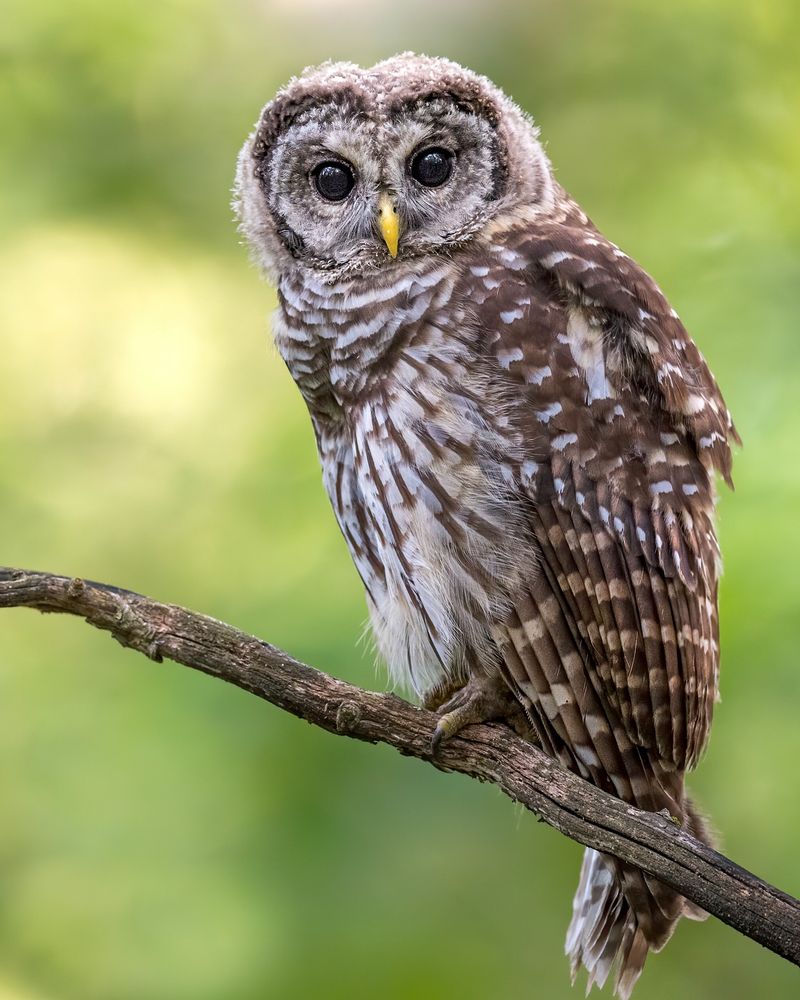
Easily recognized by its ‘Who cooks for you?’ call, the Barred Owl is a common resident of mature forests in North America. These owls prefer mixed woodlands with water sources nearby.
They have a varied diet that includes small mammals, birds, and amphibians. Barred Owls are known for their territorial hooting, often heard during courtship and territorial displays.
With large, dark eyes framed by concentric circles of feathers, they have a striking appearance. Their presence is often indicated by a sudden silence in the forest as they approach, their flight being almost entirely noiseless.
8. Long-Eared Owl
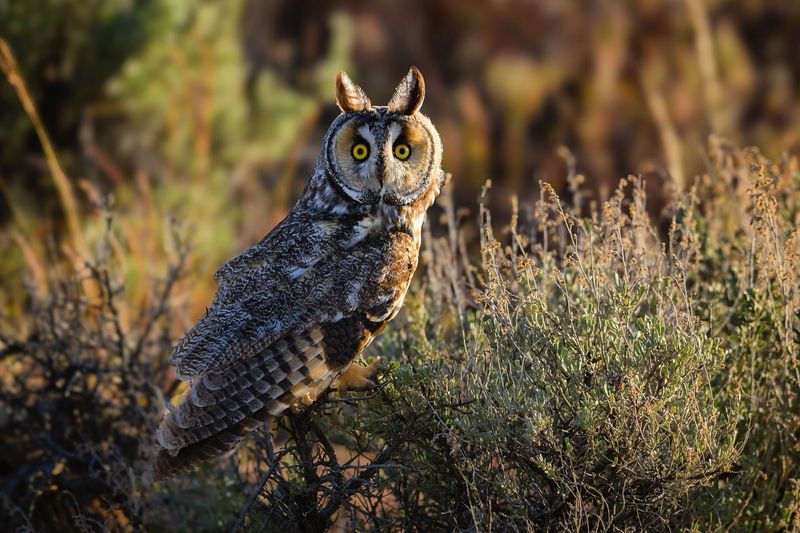
One of the favorites of wildlife enthusiasts! The Long-eared Owl is a secretive and slender owl found throughout North America. They prefer dense, wooded areas for roosting and open areas for hunting.
Their ear tufts are not used for hearing but for camouflage, mimicking twigs or branches as they rest. These owls primarily feed on small mammals, particularly voles.
Known for their elegant flight, Long-eared Owls glide effortlessly through the night as they search for prey. Due to their elusive nature, they are often more easily heard than seen, especially during their breeding season when their low hoots can carry long distances.
9. Western Screech Owl
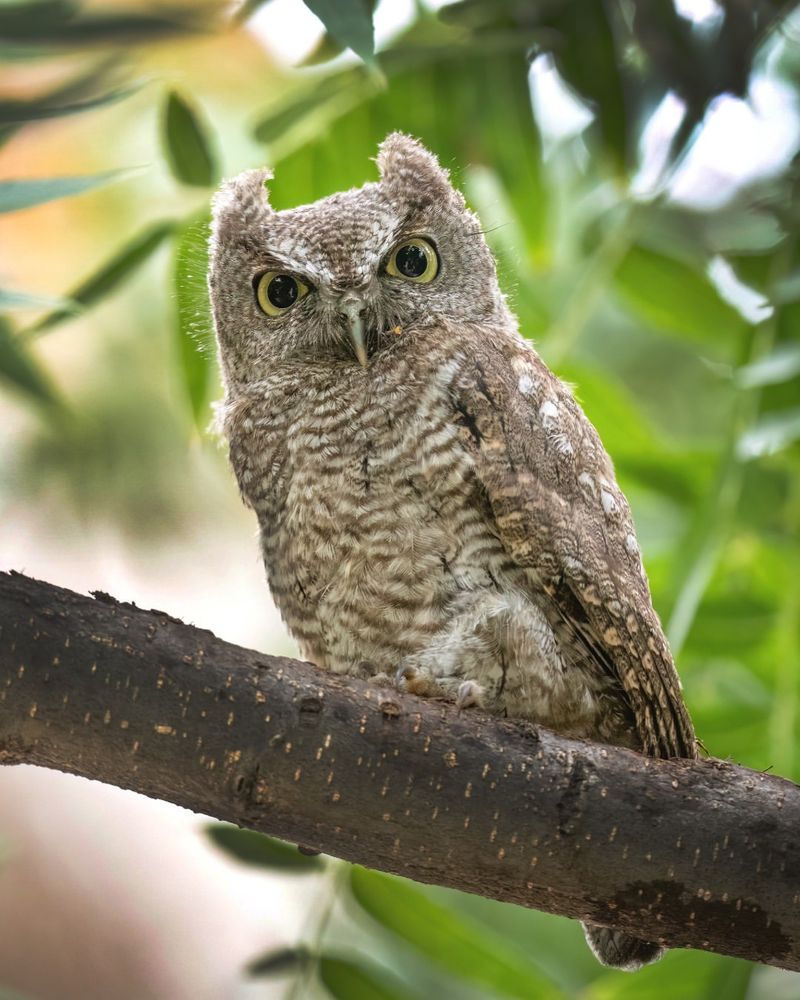
Occupying the western parts of North America, the Western Screech Owl is a versatile predator found in a variety of habitats, from deserts to forests. They are known for their distinctive series of trilling calls.
These owls have a varied diet, feeding on everything from insects to small birds and mammals. Their small size and cryptic plumage make them adept at hiding in plain sight.
Often seen at dusk, Western Screech Owls are also known for their adaptability to suburban environments, taking advantage of human-altered landscapes to find food and nesting sites.
10. Northern Pygmy Owl
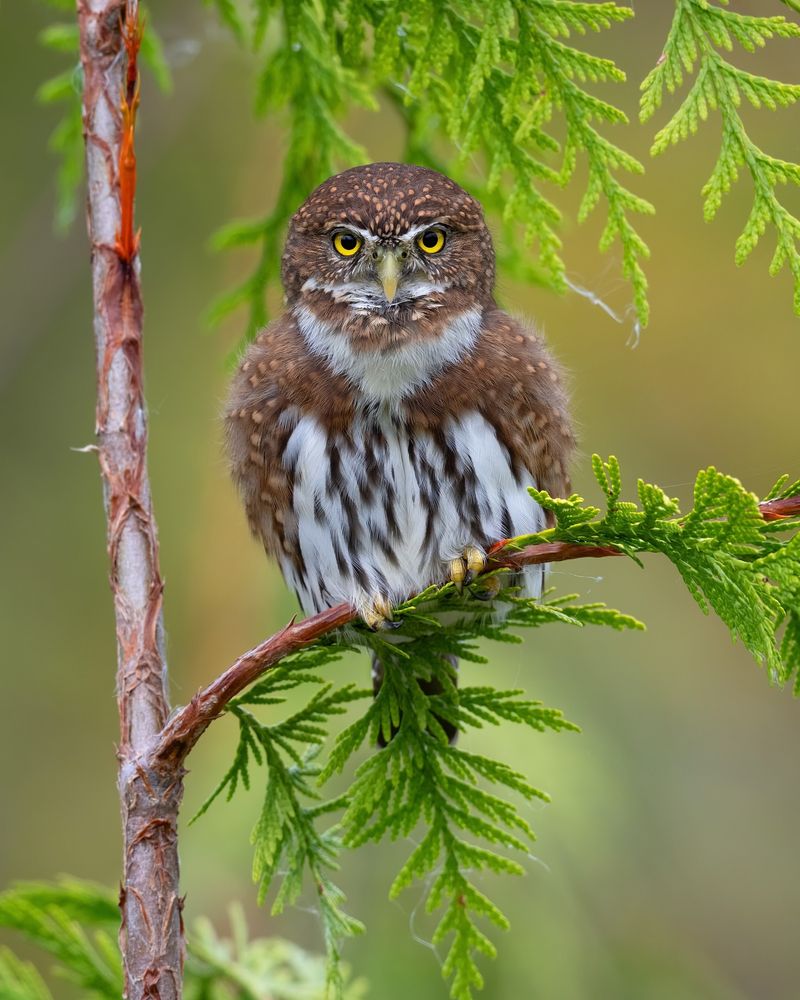
As one of the smallest owls in North America, the Northern Pygmy Owl is a fierce hunter despite its diminutive size. Found in western forests, it is diurnal, often seen hunting during the day.
This owl’s diet mainly consists of small birds and mammals, which it captures with surprising agility. Their distinctive call, a series of high-pitched toots, often reveals their presence.
Northern Pygmy Owls are known for their boldness, sometimes taking prey as large as themselves. Their bright yellow eyes and spotted plumage make them fascinating to observe for bird enthusiasts.
11. Elf Owl
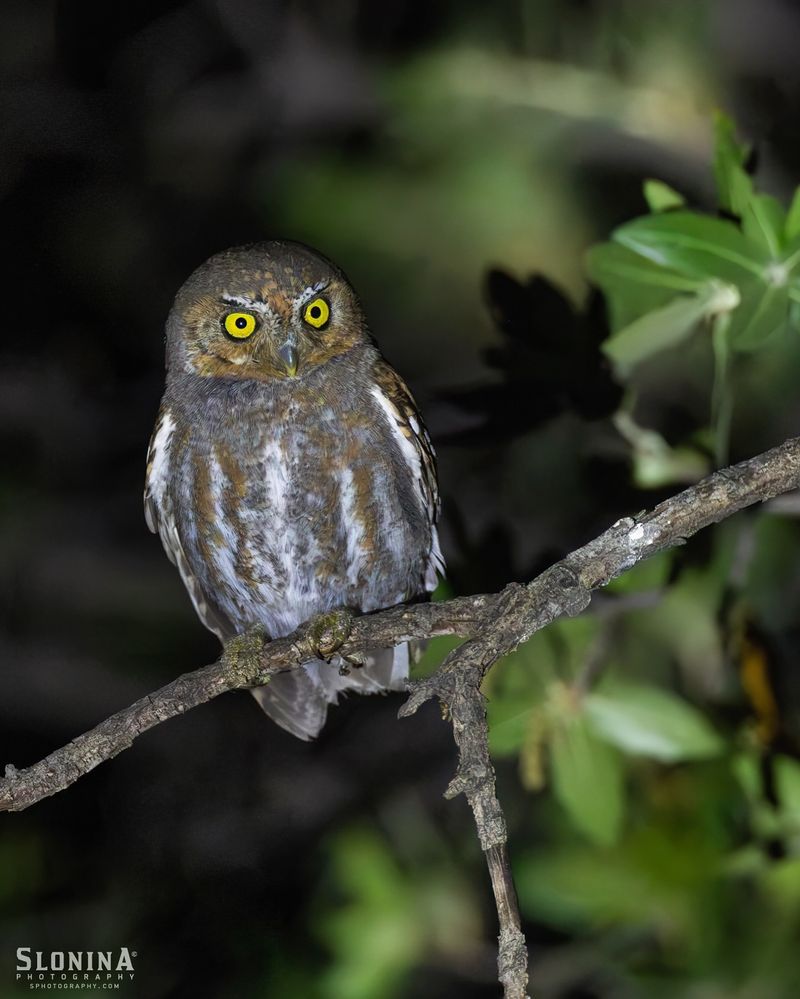
This is the smallest owl in North America, which is where we get the name from! The Elf Owl lives primarily in desert regions. Despite its small stature, it’s a skilled hunter, feeding on insects and small vertebrates.
These owls reside in old woodpecker holes in cacti or trees, providing them with shelter from predators. Their call is a series of short, high-pitched notes, often heard at dusk.
Elf Owls migrate to warmer climates during the winter, showcasing their resilience and adaptability. Their charming size and behavior make them a favorite among bird watchers and nature enthusiasts.
12. Flammulated Owl
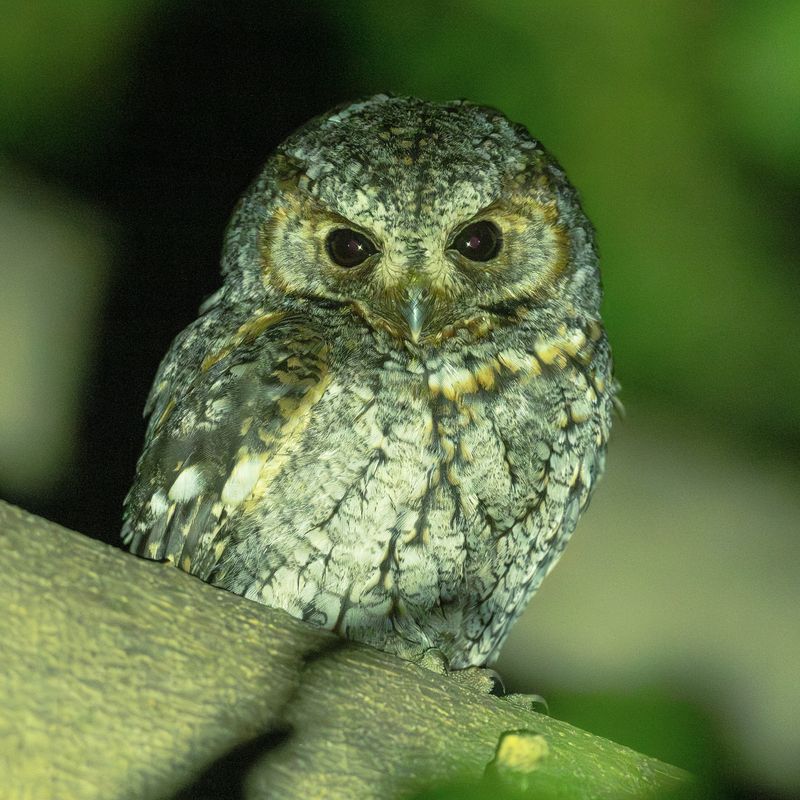
Oh, those eyes! The Flammulated Owl is a small, nocturnal bird with a preference for montane forests in western North America. Their diet primarily consists of insects, particularly moths, which they catch in flight.
These owls are named for their flame-like facial pattern and reddish-brown plumage, which provides excellent camouflage against the bark of pine trees. Their call is a low-pitched hoot, often mistaken for a distant dog bark.
These raptors are migratory, spending their winters in Central America. Their secretive nature and preference for forested habitats make them a challenge to spot, adding to their allure for bird watchers.

